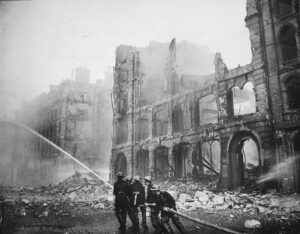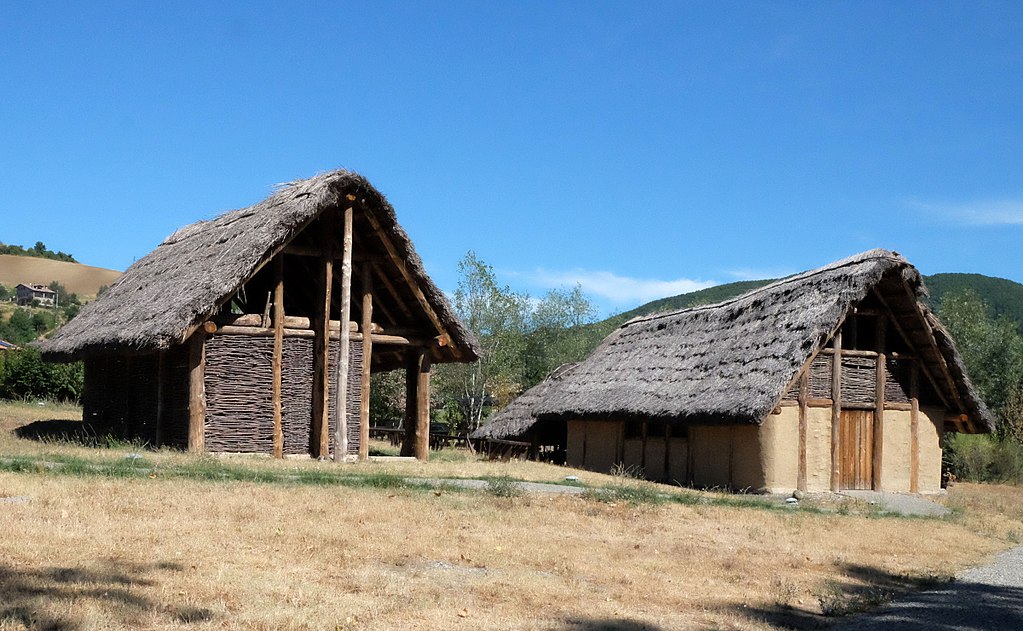Preserving Heritage and the World War II Strategic Bombing
On this platform, we are highlighting the growing targeting of cultural heritage and historical memory by armed conflicts and crisis situations affecting national or state entities, such as the war Russian against Ukraine, the crisis between Thailand and Cambodia, and the attack on Armenian heritage.
In numerous instances, it is evident that the deliberate destruction of cultural heritage serves as a tool of aggression. In this context, it is pertinent to explore the evolution of a distinct form of aggression that does not specifically target cultural heritage but rather cities and their inhabitants.
During World War II, such an approach led to the development of studies and experiments designed to enhance the impact of bombing cities.
A presentation by Professor Carmen Vincenza Manfredi (Università di Roma) at the 2023 conference on “Contemporary Cities and Technical Safety” addresses a peculiar aspect of the events of the Second World War.
The paper “Al contrario. Pianificazione ed effetti dei bombardamenti strategici della Germania e del Giappone nella Seconda guerra mondiale” (On the contrary. The planning and effects of German and Japanese strategic bombing in World War II) underscores that safeguarding historical and cultural heritage during conflict presents a multifaceted and critical challenge, where the likelihood of fire and structural damage is frequently catastrophic.

The contributions of architects and engineers during the Second World War, highlighted by the 2011 Jean Luis Cohen book on “Architecture in uniform : designing and building for the Second World War“, illuminate risk and vulnerability dynamics that remain pertinent today for comprehending and mitigating threats to cultural heritage in wartime contexts.
The book also raises the important issue of the relationship between architecture and contemporary urban planning, with regard to its suitability for air raid resistance. The study also emphasizes the need for further exploration in all cases where the threat of conflict could extend to urban areas.
The New Frontier of Warfare: Strategic Bombing and the Vulnerability of Heritage
During the Second World War, aerial bombing shifted its focus beyond military objectives in the field, evolving into a form of economic and moral warfare.
The primary targets became industrial sectors, infrastructure, and civilian populations of the adversary. Cities, and with them their architectural heritage, became pivotal targets.
The extensive utilisation of incendiary bombs, coupled with tactics such as the double wave aimed at crippling firefighting units, resulted in catastrophic consequences, including the infamous “firestorm” that obliterated substantial portions of historic urban fabric.
A particularly noteworthy aspect is the involvement of internationally renowned architects in the design and construction of architectural models of German and Japanese cities in the United States, known as “model villages,” to assess the efficacy of incendiary bombs.
Through meticulous analysis of materials, construction methods, and customary furnishings, these experiments provided the military with vital data to comprehend the propagation of fires in real-world scenarios, thereby deepening their comprehension of fire risks associated with the physical vulnerability of historic buildings during potential attacks.
Specific Damage to Historic Assets and Lessons for Contemporary Protection
The phenomenon of “firestorms” is closely linked to both urban characteristics, such as building density, the utilisation of traditional combustible materials, and the street layout, and the absence or inability of effective firefighting interventions during wartime attacks.
These factors have resulted in the loss of monuments, historic cities, and unparalleled cultural heritage. The historical bombings of Hamburg, Tokyo, and Dresden serve as a testament to how war planning often disregarded the historical value of buildings, with irreversible consequences.
Prospects for the Protection of Historic Heritage in the Event of Conflict
In the conservation and management of historic assets, professionals must integrate multidisciplinary knowledge into their work, encompassing fire risk considerations in armed conflict scenarios. Notably, it is imperative to:
- Promote preparation and preventive planning that acknowledges the historical vulnerabilities associated with traditional materials and construction techniques;
- Comprehend the impacts of wartime fires on diverse types of tangible heritage, including dynamic aspects such as widespread fires and structural damage;
- Collaborate with civil defence experts, fire engineers, and urban planners to develop safeguards and prompt and effective response strategies, including in emergency situations.
The historical memory of wartime events and the associated damage to built heritage serves as both a warning and an indispensable guide for refining contemporary protection policies.
The “reverse work” undertaken by architects during the Second World War, with the objective of comprehending vulnerabilities for destructive purposes, has emerged as a valuable resource for developing protection and resilience strategies for our cultural heritage.
Only through a thoughtful and interdisciplinary approach will it be feasible to safeguard our heritage from the perils of fire and war, ensuring its preservation for future generations.







